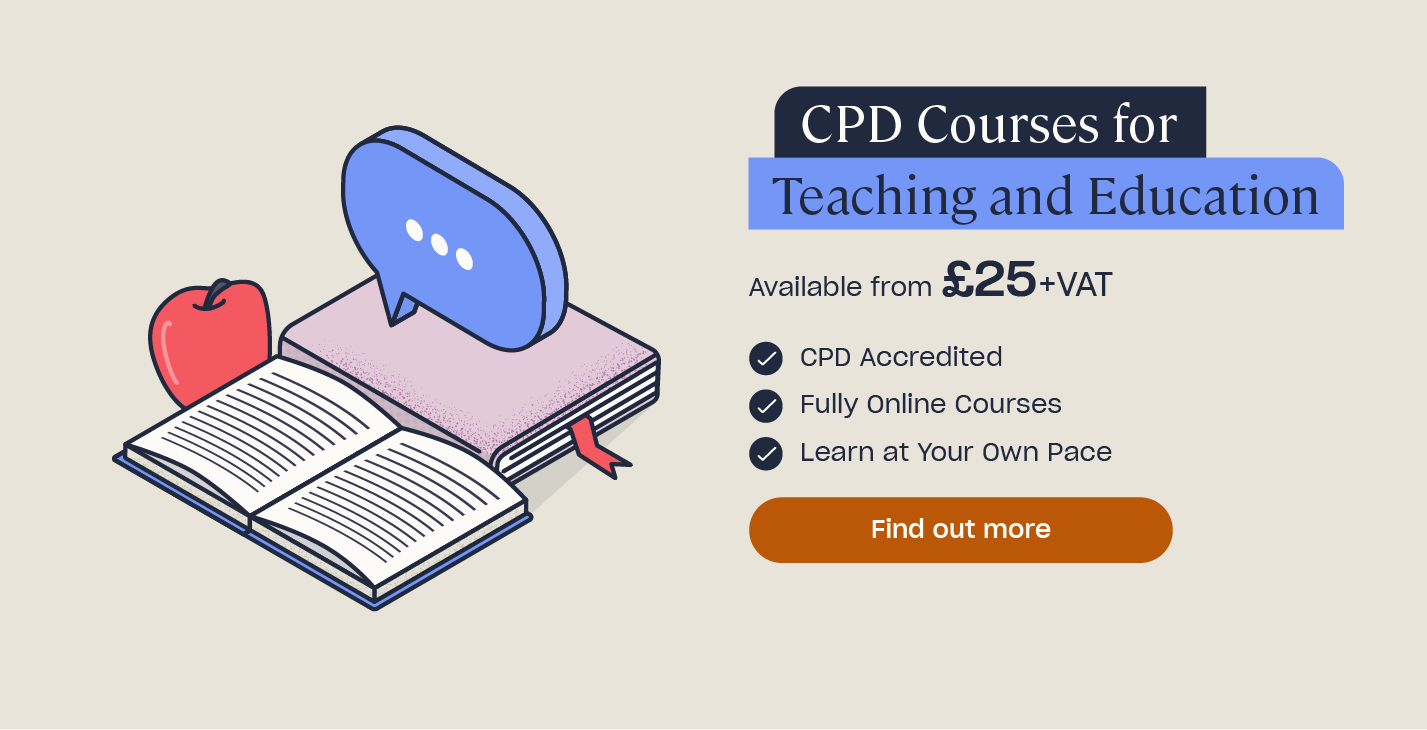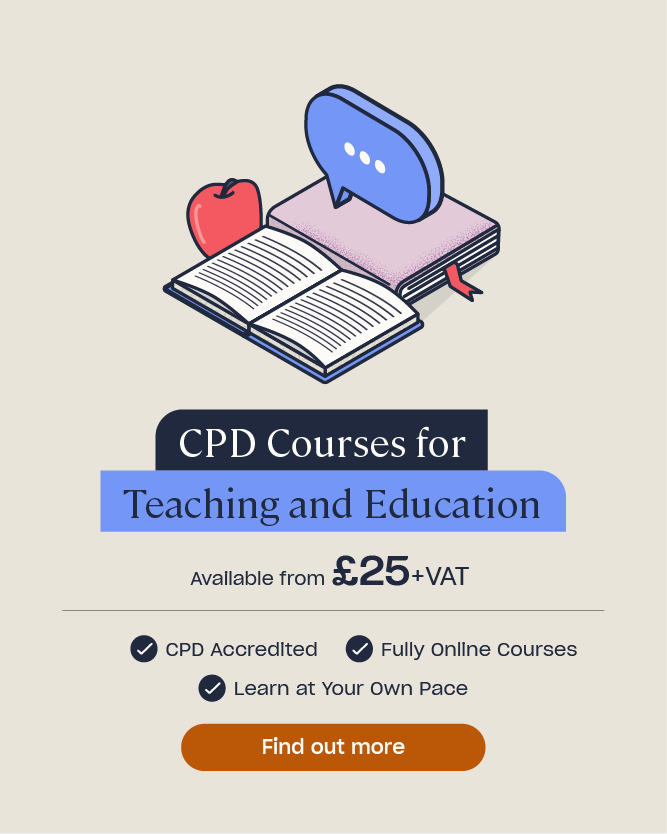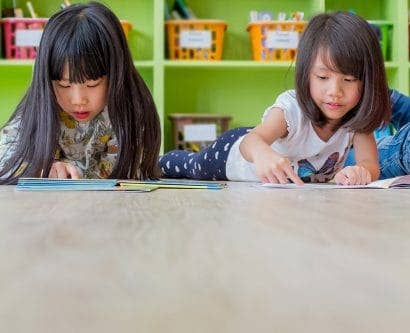Effective Communication in the Classroom: Skills for Teachers
Communication is key in the classroom: successful teaching is generally considered to require only 50% knowledge to 50% communication skills. As a result, a teacher should be proficient in all four modes of communication – listening, speaking, reading, and writing – and should know how to utilise this proficiency effectively in a school environment. Being able to do this has been proven to impact the success students achieve in their academic lives, as well as the teacher’s own career success.
In this article, we will outline the reasons why classroom communication has such importance. You will also learn some of the strategies you can use to help you and your students attain your best outcomes.

Why is it Important for Teachers to Have Effective Communication Skills?
Teachers benefit from good communication skills in three different areas: when communicating with students, with parents, and with colleagues.
Communicating with Students
Communication skills are most vital for interactions with students, because the act of teaching itself requires them. In your role, you are responsible for comprehending and breaking down complex information, conveying this information clearly to your students (both verbally and in written resources), presenting in a manner that sustains their attention, and listening to and resolving their questions or problems.
You are also required to adapt content for different learning styles, motivate students to learn, build supportive relationships using encouragement and empathy, manage the classroom, and give feedback – making your classroom a safe and supportive learning environment. All of these things require good communication skills.
The better your communication skills, the more effectively you can perform these tasks. In turn, your students will make more academic progress. Studies have found that the success of students is directly related to interactive, engaging teaching environments formed by able teachers (see Mashburn et al., 2008). Additionally, the way that you communicate with your students can positively affect their perceptions of school, their role in the classroom, themselves and their abilities, and their motivation to succeed (see Dobbs & Arnold, 2009).
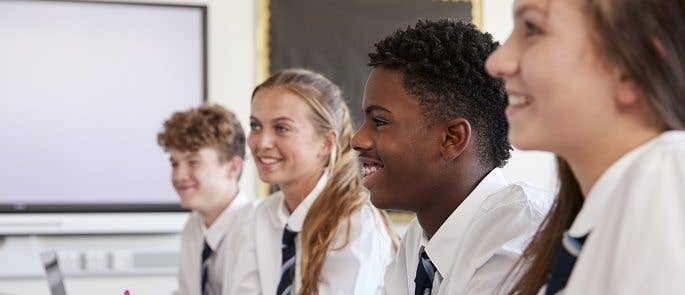
However, this works both ways: poor communication skills – and thus poor methods of teaching – causes students’ comprehension levels to drop, and may affect their academic progress negatively. It could also lead to students lacking motivation, disliking school, and believing themselves to be unable to achieve. This could have consequences for the rest of their lives.
Therefore, effective communication between teachers and students is extremely important. It allows you to perform your job well, with positive results for your pupils. An added benefit is that your class can use you as a model for improving their own communication skills, which are critical for their development and future learning.
Effective coaching and mentoring can help boost your communication with students as you focus on three key areas: foundations, principles and practice.
Looking to learn more?
Explore how to coach with consistency and plan for an effective mentoring session with our Coaching and Mentoring course which has been designed to give you the practical skills needed to get started with your successful teaching career.
Communicating with Parents
As a teacher, you will also need to communicate effectively with parents. This could take place through a variety of mediums, including phone calls, emails, and in-person meetings, so you must be skilled with both verbal and written language.
This is particularly important because you will often have to discuss sensitive subjects – such as behaviour issues, learning problems, and the student’s strengths and weaknesses – without making the parent feel confused or defensive. It is vital that you are clear, but tactful, at all times. Failing to communicate well with parents could lead to doubts on their part about your ability to teach, and possible complaints, as well as a lack of understanding of their child’s performance and educational needs.

Communicating with Colleagues
Teaching does not always involve independent work – it also requires collaboration. Whether you are planning lessons together, updating your colleagues on certain students’ progress, or sharing tips about how to handle issues in the classroom, good communication skills will be of use to you.
You might also utilise these skills in staff meetings and training sessions – being able to lead meetings, present in front of varied audiences, and give feedback to other staff could illustrate to your colleagues and superiors that you are a good candidate for promotion.
As we have demonstrated, there are many reasons why effective communication skills are imperative in a teaching career. In the next section, we will give you some strategies to improve your communication in the classroom.
Need a Course?
Build on your existing knowledge or learn new skills to help you in the classroom with our CPD Courses for Teaching Staff. Find everything from Challenging Behaviour Training to Leadership and Management Training.
Strategies for Effective Communication in the Classroom
What we classify as ‘good’ or ‘effective’ communication depends on the context. When you are presenting in front of the class, you will use different strategies than when you are facilitating a group discussion, or speaking to a student one-to-one.
Here, we will suggest eight strategies that are applicable to each of the contexts that you may encounter.
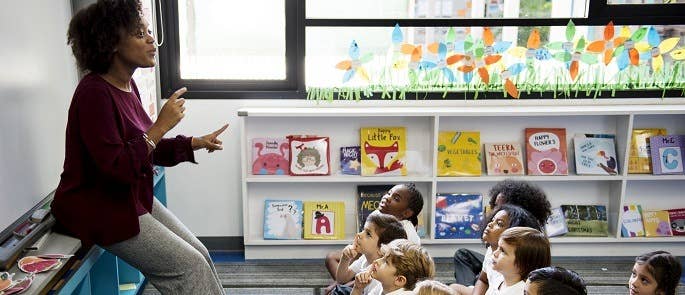
1. Create a safe learning environment with supportive relationships
It has been proven that supportive relationships between students and teachers have a positive impact on class engagement, participation, and the students’ achievements. It has even been suggested that these supportive relationships may negate the tendency for low-income students to have poorer school outcomes (see O’Connor & McCartney, 2007).
This is because, when students feel supported, they are more comfortable expressing their own thoughts and ideas in class discussions, attempting challenges, and asking when they need help. Higher levels of engagement and participation then lead to better developed knowledge and greater achievement.
A supportive learning environment is built using communication: you should get to know your students well, and show them that they are safe from judgement or humiliation in your classroom. It is a good idea to learn students’ names early in the year, and use them often. Have an open-door policy for students to come and talk to you about any issues, and be empathic and caring when you interact with them at all times: don’t tell them off for not understanding and don’t ridicule their thoughts and ideas.
Additionally, you should recognise that some students don’t feel comfortable talking in front of the class. If you do ask them to participate, you could use scaffolding (such as sentence starters) to make them feel safer doing so. However, forced participation is usually unnecessary: it is likely that quieter students have excellent listening skills, and are learning just as much, despite not sharing their own thoughts.
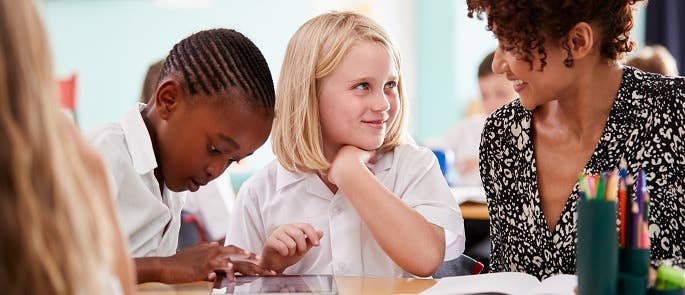
2. More teamwork
Teamwork and group discussions contribute to making the classroom a more comfortable environment. By working in small groups, students are able to share their ideas more easily, and improve their own communication skills. These activities also give them a good opportunity to ask you questions and get feedback on their work, leading to effective communication between you, better understanding of the lesson, and academic benefits.
You could also try to improve your communication skills through teamwork with your colleagues. Planning more lessons together, sharing ideas, and problem-solving together will develop the way that you interact.
3. Body language
Communication is not only verbal, but also non-verbal: you should ensure that the signals you are giving out through your body language are positive, confident, and engaging.
For example, making eye contact with students when you are talking to them shows that you are being supportive and attentive. Making eye contact is also important when you are presenting to the whole class – it motivates everyone to pay attention, which helps them to learn, as well as making them feel involved. In order to make more eye contact, you may have to learn your lesson content more thoroughly in advance, so that you don’t have to look away to read your notes.

As you teach, you should use gestures to emphasise your words. This increases the interactivity of the lesson, making it more visually interesting and hence, more memorable. Keep your arms open – do not fold them – and use smiles, nods, and thumbs up to encourage students when they participate. Moving around the classroom while you teach can help to remove the barrier between you and your students, and gives them less opportunity to zone out or get distracted.
Body language is also important when dealing with negative behaviour. To avoid being confrontational, ensure that you don’t stand directly above or in front of a student, point, or invade their personal space. It may be effective to get down to their level and talk quietly about their behaviour, or speak to them outside the classroom, to avoid drawing too much attention. Remember that students’ behaviour is also a form of communication, and think about what it is telling you.
You can find out more about dealing with challenging behaviour from our dedicated article: ‘How to Deal with Challenging Behaviour in the Classroom’.
4. Active listening
The ‘listening’ component of communication should not be overlooked – over 60% of all misunderstandings result from poor listening (Caruso, Colombi, & Tebbit, 2017).
Practising good listening in the classroom can benefit you in two ways. Firstly, you will be a model for your students, who will improve their own listening skills, and thus retain lessons better. Secondly, by using active listening, you can correct misunderstandings and extend learning, resulting in a better education for your students.
Active listening involves listening carefully to what your students say, checking that you have understood them correctly (for example, repeating back to them what you think they have said), building on their ideas, and challenging or questioning them. It is the best approach to use to foster understanding in the classroom, and is an excellent example of effective communication.
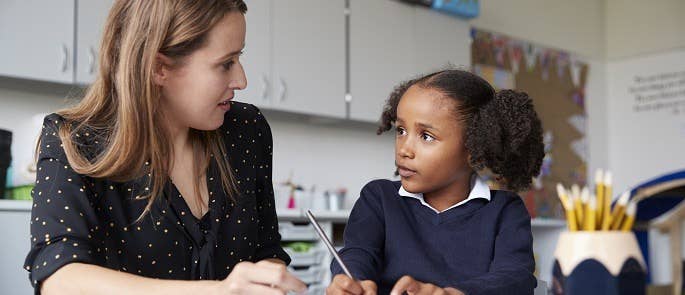
5. Feedback
Feedback is also an important component of communication in the classroom. There have been many studies focusing on feedback in recent years. It has been shown that positive feedback (i.e. praise) builds students’ confidence – making them more likely to believe that they can succeed – and helps to create a supportive environment and increase academic success.
You can also use positive feedback to modify students’ behaviour: for example, praising a student for having their hand up is likely to cause the students around them to stop ‘shouting out’ and copy this behaviour, in order to be praised themselves (Howell, Caldarella, Korth, & Young, 2014).
However, positive feedback can be detrimental to learning if it is used without being deserved, or too frequently (Cannella, 1986). Phrases such as ‘good job’ or ‘beautiful’ may not motivate students, because they do not understand what they are specifically being praised for, while over-praising can cause children to lack interest in situations where they are not being praised (e.g. Howell et al., 2014). As a result, you should give specific, deserved positive feedback – use the student’s name, explicitly state what they are doing right, and thank them enthusiastically.

Negative feedback is used more often in the classroom than positive feedback, and many researchers have argued that this should not be the case. While negative feedback can help students to improve – for example, by changing their behaviour, or trying harder at a task (Conroy et al., 2014) – it does also contribute to conflictual relationships with students (e.g. Allen et al., 2013). It has also been suggested that it can cause lower levels of academic success (e.g. Wu et al., 2010).
These disadvantages are compounded by the fact that the negative feedback is not always successful – students tend to continue the behaviour despite negative feedback around 20% of the time – and it tends to decrease students’ motivation and interest in a task (e.g. Spilt et al., 2016). Other consequences include decreased self-worth, which impacts children’s academic success (e.g. Harter, 2012).
As such, you should ensure that you use negative feedback only sparingly; for general classroom management, using positive feedback to illustrate the behaviour that you want to see is much more effective. In situations where you do have to use negative feedback, you should explicitly address the behaviour you want to stop, give an explanation why (e.g. ‘don’t do that. I don’t think it is safe’), allow the student to think about morality (e.g. ‘are you doing the right thing?’), or use a simple form of ‘no’ (e.g. ‘no’, ‘mm mm’). These techniques increase the effectiveness of negative feedback, and decrease any detrimental impact that it might have.
Finally, you should give students the opportunity to give you feedback on your lessons or teaching styles. This shows that you value their opinion, increases communication between you, and helps you to improve your teaching and their learning.
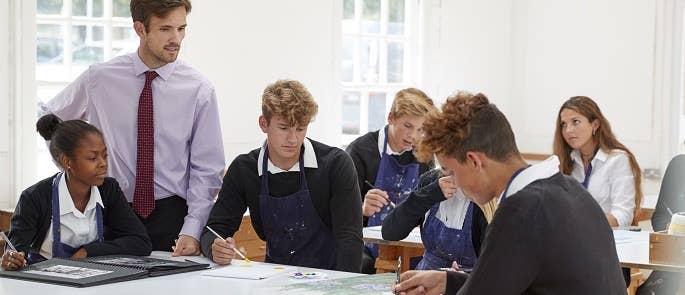
6. Sense of humour
The use of humour in the classroom has been found to increase learning, self-motivation, and positive relationships between students and teachers (see Segrist & Hupp, 2015). It allows you to establish a rapport with your class, and keep them interested in the lesson.
For example, you might tell jokes or funny anecdotes, give light-hearted personal examples, or laugh at students’ own jokes. However, you should ensure that you don’t use negative humour – where you demean or embarrass students – or humour that is either irrelevant to the lesson, disturbing, violent, sexual, or forced. Only continue to use humour that has received a positive response from the class (such as laughing).
7. Technical skills
Using up-to-date teaching aids such as computers, videos, and online resources is another way to keep students engaged and reinforce their understanding. It can also increase the effectiveness of your communication with students with different learning styles, who may benefit more from online resources than more old-fashioned ones. Try to work some of these aids into your lessons on a regular basis.
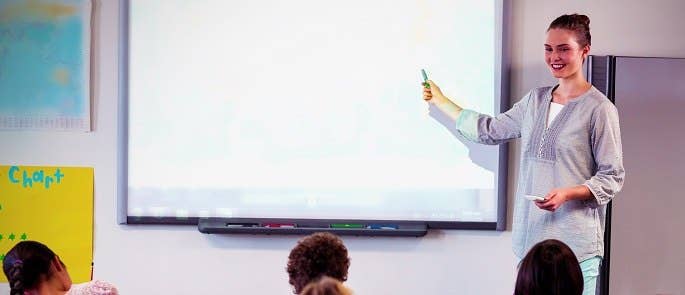
8. Be clear
Good communication – and good teaching – is about understanding and being understood. For this reason, you should always be clear and unambiguous, and adapt your words to your audience. Think about this while writing lesson plans (ensure that you break complex ideas down into simple, logical parts for your audience to understand), but also while you interact with the children after presenting the lesson. For example, you may wish to check that your teaching was clear by asking your students questions, or requesting summaries of the lesson in their own words.
When you ask your students questions, use appropriate scaffolding to ensure that they understand exactly what you are asking. If you teach in a primary school, your students’ language abilities won’t yet be fully developed. Closed questions (eliciting yes/no responses), forced alternatives (such as ‘is he angry or happy?’), and sentence starters (e.g. ‘a noun is…’) are most effective for communicating with younger children. For older children, open-ended questions (such as ‘how do you think…’ or ‘tell me about…’) allow them to extend their thinking and develop their problem-solving skills.

The importance of effective communication in the classroom should not be underestimated – it can have an impact on your students’ academic progress, feelings of self-worth, perceptions of school, and your own career. Using communication strategies like the ones we have detailed above could allow you to become a more successful teacher who better meets your students’ needs.
Further Resources:
- CPD Courses for Teaching Staff
- What is Effective Questioning & Why Should I Use it in My Classroom?
- Professional Development Plan for Teachers
- What is Contextual Safeguarding & Why is it Important?
- Marking Symbols: A Guide for Primary School Teachers
- How to Set Behaviour Expectations in the Classroom
- How Understanding Different Types of Memory Can Help in Teaching
- What is Adaptive Teaching?
- Metacognition in the Classroom: Benefits & Strategies
- How to Create a Positive Learning Environment
- How to Use Assessment for Learning in Schools
- Promoting Effective Communication with Parents in Education
- Communication Skills Quiz


